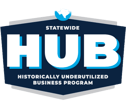Remember 2004? Shrek 2 was breaking box office records, we were all singing "Yeah!" by Usher, and Facebook was just getting started. That same year, NIOSH published its first list of hazardous drugs in healthcare settings. It was a sample list of 34 drugs that would (slowly) grow into the list of 236 drugs NIOSH released in 2024.
The Early Days: Where It All Started
Back in 2004, NIOSH's Preventing Occupational Exposure to Antineoplastic and Other Hazardous Drugs in Health Care Settings was a critical resource for healthcare systems and facilities.
At Rpharmy, we were in our own early days, digitizing the formulary and transforming those hefty reference books into the first cloud-based system. Our current COO, Caroline McBreen, was just nine years old and already doing data entry on AHFS classes on her summer break for money to afford a fuzzy sweater from the Limited Too. Little did we know the huge role she’d come to play when she joined the company in 2023. 🤩
The Slow March of Progress
While awareness of hazardous drug dangers has grown exponentially since 2004 (thankfully), official policies have crawled along:
- 2004: First NIOSH list (34 drugs)
- 2012: USP <800> initially developed
- 2010-2016: NIOSH list grows slowly
- 2023: USP <800> finally implemented
- 2016-2024: FDA approves 420 new drugs
- 2025: NIOSH reaches 239 drugs, while Rpharmy includes 600+ drugs in its Rhazdrugs database
That timeline reveals the challenge: healthcare systems have been left to assess hundreds of new drugs with minimal official guidance for years.
The Reality Check
NIOSH 2024 provided some relief, but also created loads of additional work and highlighted ongoing gaps. For instance, the drug Tacrolimus has manufacturer’s special handling information (MSHI), yet it is listed as a Table-2 drug. If we read NIOSH’s Table descriptors, Tacrolimus should be on Table-1 because it has MSHI. Our team has reached out to NIOSH multiple times for clarification to advise our clients without a response from NIOSH.
This is exactly the type of detective work required to stay current, work that most pharmacy directors simply don't have time for alongside their other responsibilities.
Our Take: Focus on What Matters
Here's the thing: inspectors aren't going to quiz you on the little details about each drug, like whether a specific drug is technically a carcinogen. They're looking for:
- Best practices to protect healthcare workers
- Assessment of drugs not on the NIOSH list (AORs)
- Proper documentation of administrative and operational requirements
- Compliance with USP <800> strategies
Moving Forward Together
Following the publication of NIOSH 2024, Rpharmy’s Sherlene Christen set out immediately to assist clients in evaluating their current lists against the updated NIOSH list. However, many Pharm Ds not using Rhazdrugs were left to determine how the changes in the tables, as well as the additions and removals of drugs, impacted their existing hazardous drugs list.
We heard many asking, “What’s my source of truth? Where do I get my information?
There are several highly respected and knowledgeable USP <800> experts out there who share what they’ve learned in webinars and blogs. One we turn to frequently is Patricia Kienle, RPh, MPA, FASHP, and the Director of Accreditation and Medication Safety at Cardinal Health.
Also, talk to your peers. We continue to encourage this community to share what they’re learning - both the triumphs and the mistakes.
At Rpharmy, we also recognize how our work with clients helps to continually improve the way we present this vital safety information to you and the healthcare workers within your facility. In the end, the safety and health of patients and healthcare workers improve day by day with each new client we work with, and as the community of pharmacists shares best practices.
Bottomline:
Twenty years from now, we want to look back on this era as the time when the pharmacy community came together to prioritize healthcare worker safety. That means sharing knowledge, learning from mistakes, and supporting each other through the complexity.
The nostalgia is fun, but the real work continues. Let's make the next 20 years count.
What questions do you have about your current hazardous drug protocols? We'd love to hear from you and continue building this community of safety-focused pharmacists.

